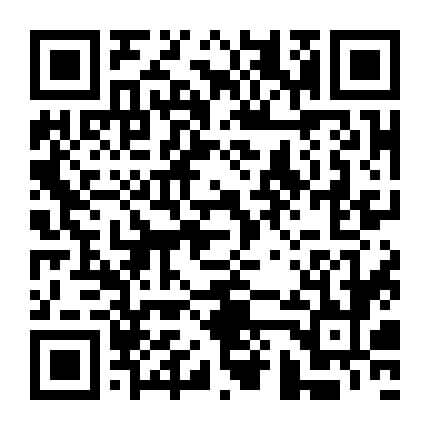2021年考博英语阅读理解模拟题(十九)
- 1
- 2
- 1
摘要:考博英语考试中,阅读理解属于必考题型,分值大约30-40分,希赛网整理收集了2021年考博英语阅读理解模拟题资料,供大家复习备考时练习使用。
When there is blood in the water, it is only natural that dorsal fins swirl around excitedly. Now that America's housing market is ailing, predators have their sights on the country's credit-card market. Analysts at Goldman Sachs reckon that credit-card losses could reach $99 billion if contagion spreads from subprime mortgages to other forms of consumer credit. Signs of strain are clearly visible. There are rises in both the charge-off and delinquency rates, which measure the share of balances that are uncollectable or more than 30 days late respectively. HSBC announced last month that it had taken a $1.4 billion charge in its American consumer-finance business, partly because of weakness among card borrowers.
It is too early to panic, though. Charge-offs and delinquencies are still low. According to Moody's, a rating agency, the third-quarter delinquency rate of 3.89% was almost a full percentage point below the historical average. The deterioration in rates can be partly explained by technical factors. A change in America's personal-bankruptcy laws in 2005 led to an abrupt fall in bankruptcy filings, which in turn account for a big chunk of credit-card losses; the number of filings (and thus charge-off rates) would be rising again, whether or not overall conditions for borrowers were getting worse.
The industry also reports solid payment rates, which show how much of their debt consumers pay off each month. And confidence in credit-card asset-backed securities is pretty firm despite paralysis in other corners of structured finance. Dennis Moroney of TowerGroup, a research firm, predicts that issuance volumes for 2007 will end up being 25% higher than last year.
Direct channels of infection between the subprime-mortgage crisis and the credit-card market certainly exist: consumers are likelier to load up on credit-card debt now that home-equity loans are drying up. But card issuers look at cash flow rather than asset values, so falling house prices do not necessarily trigger a change in borrowers' creditworthiness. They may even work to issuers' advantage. The incentives for consumers to keep paying the mortgage decrease if properties are worth less than the value of the loan; card debt rises higher up the list of repayment priorities as a result.
Card issuers are also able to respond much more swiftly and flexibly to stormier conditions than mortgage lenders are, by changing interest rates or altering credit limits. That should in theory reduce the risk of a rapid repricing of assets. “We are not going to wake up one day and totally revalue the loans,” says Gary Perlin, Capital One's chief financial officer.
If a sudden subprime-style meltdown in the credit-card market is improbable, the risks of a sustained downturn are much more real. If lower house prices and a contraction in credit push America into recession, the industry will undoubtedly face a grimmer future. Keep watching for those dorsal fins.
1. Rises in the charge-off and delinquency rate indicate _____
[A] the deterioration of the subprime mortgage.
[B] the inadequate ability of card borrowers.
[C] the influence of the technical factors.
[D] the change in relevant laws.
2. The author makes mention of dorsal fins which are irrelevant to the topic in order to _____
[A] make people alert to the potential danger.
[B] attract the readers’ attention by presenting an interesting phenomenon.
[C] make people realize the graveness of the issue by showing a similar case.
[D] make the passage more vivid by imparting new knowledge to readers.
3. According to the third paragraph, the number of bankruptcy fillings would be rising again because_____
[A] there is a change in America’s personal-bankruptcy laws.
[B] the charge-offs and delinquencies are still low.
[C] the influence of the personal-bankruptcy laws has been digested.
[D] the overall conditions for borrowers are getting worse.
4. The subprime-mortgage crisis influnces the credit-card market in that_____
[A] the fall of asset values affects the card borrowers’ creditworthiness.
[B] the decrease in the mortgage payment leads to the rises of the card debt.
[C] the drying up of the home-equity loans spur consumers’ incectives to repay the card debt.
[D] the falling house prices makes the card debt rising higher.
5. According to the author, the credit-card market will more likely be threatened by_____
[A] a gradual downward tendency.
[B] a rapid collapse.
[C] a sustained trend of lowering price.
[D] the accumulation of economic recession.
[答案]
1. B
2. A
3. C
4. C
5. A
>>>查看2021考博英语阅读理解模拟题汇总
注:以上信息来源网络,如有侵权,请联系客服删除
延伸阅读
- 哈尔滨体育学院2026年博士研究生招生简章
- 福建医科大学2026年招收全日制博士研究生简章
- 复旦大学基础医学院2026年博士研究生招生“申请-考核”制选拔办法
- 中国地质科学院2026年博士研究生招生简章
- 中国电力科学研究院2026年博士研究生招生简章
- 上海交通大学与宁波东方理工大学2026年联合培养博士生招生简章

考博英语微信公众号

了解更多考试动态
考博英语备考资料免费领取
去领取

根据120+院校真题,整理出考博英语历年真题和模拟试题训练,助力快速备考。
- 1
- 2
- 1
 专注在线职业教育24年
专注在线职业教育24年






 扫描二维码
扫描二维码
 扫描二维码
扫描二维码








